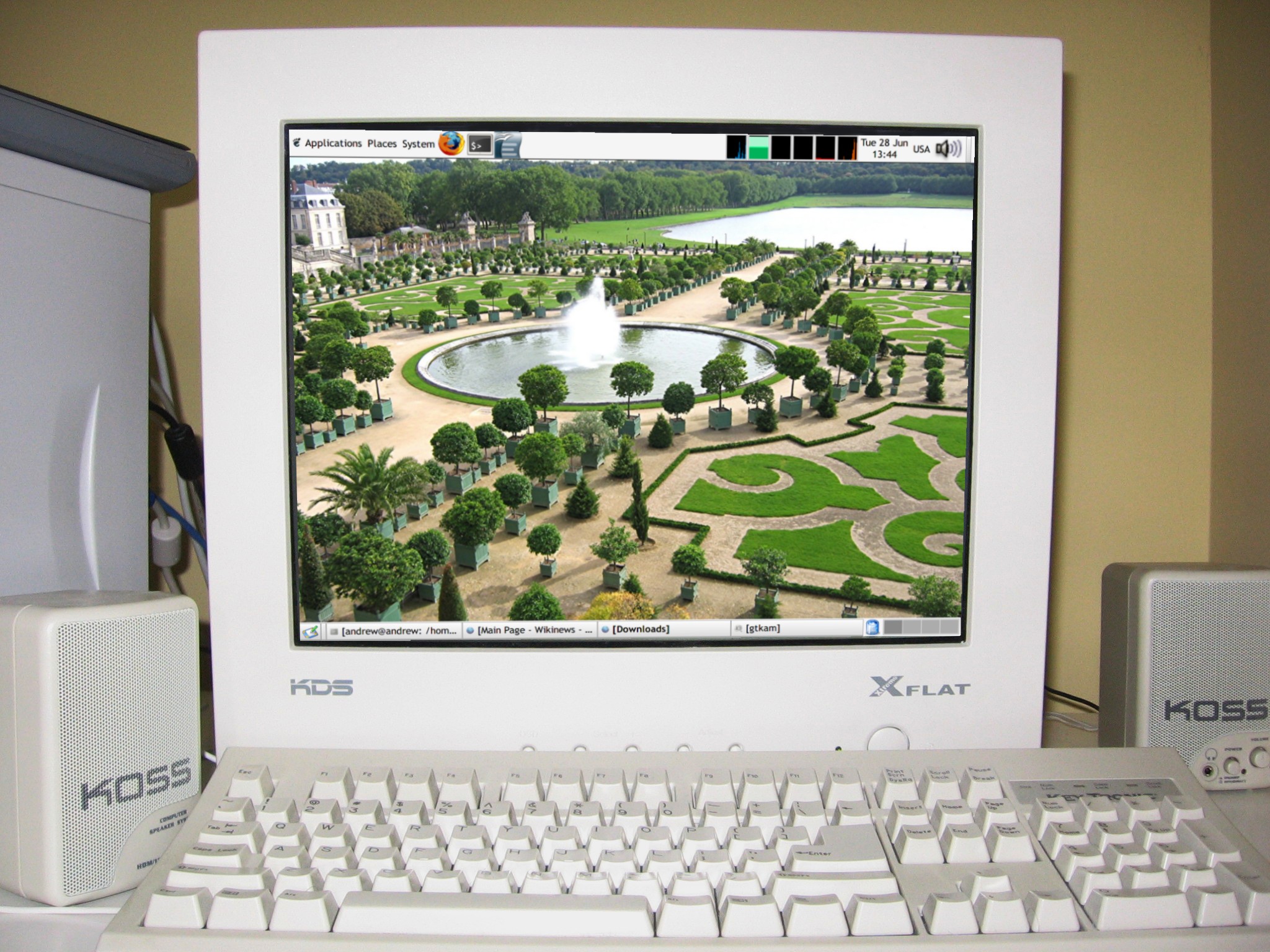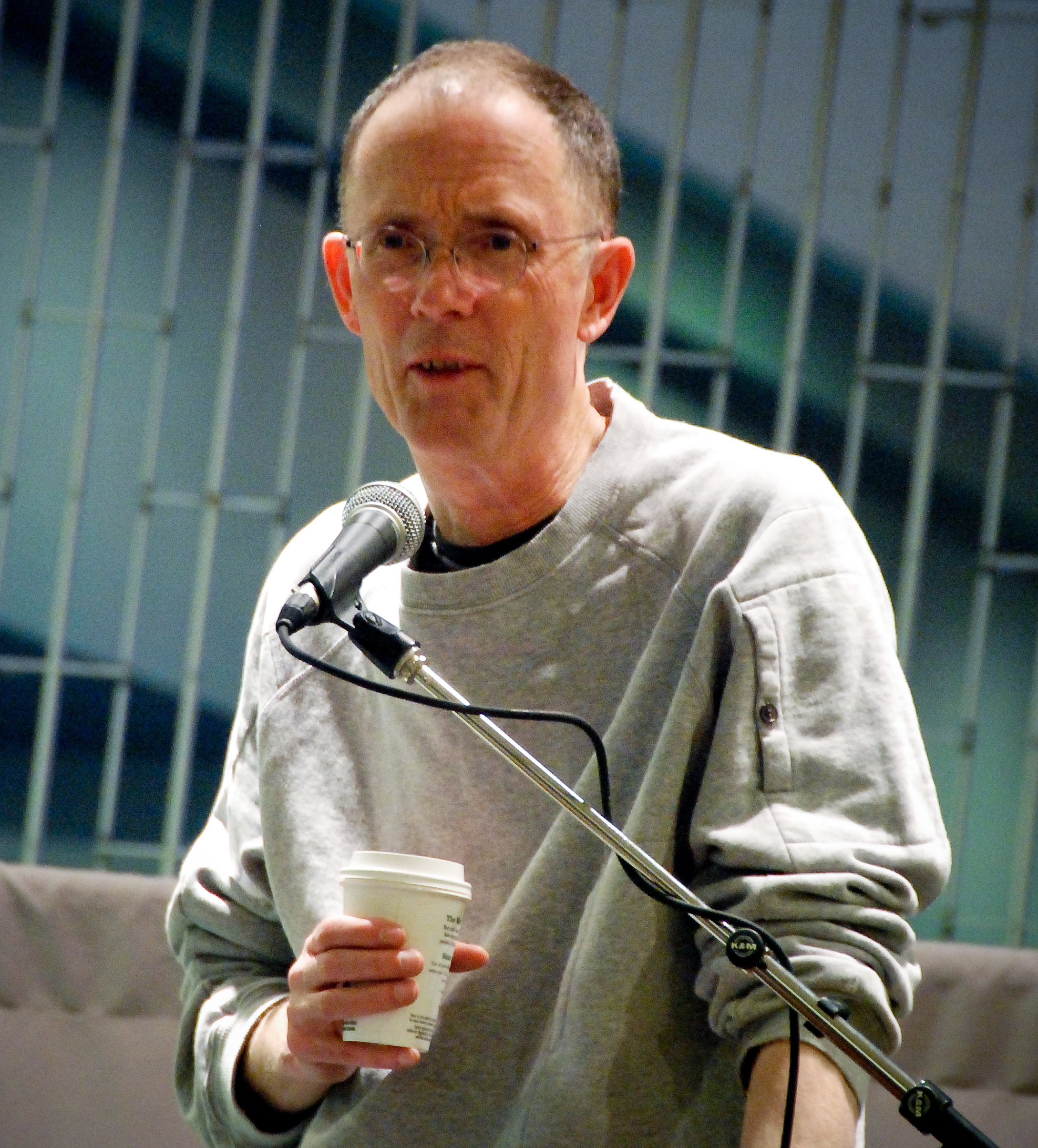|
Knowledge Navigator
Coined in 1987, the term Knowledge Navigator described a future computing system and how people might use it to navigate worlds of knowledge. In a sense, the user is actually the "Knowledge Navigator," though the term often refers to the system’s primary interface, a tablet computer. That part (i.e., the tablet) often stands for the whole system. The term is also the title of an Apple "vision video." The concept was described by former Apple Computer CEO John Sculley and John A. Byrne in their book, ''Odyssey: Pepsi to Apple''. "A future-generation Macintosh, which we should have early in the twenty-first century, might well be a wonderful fantasy machine called the Knowledge Navigator, a discoverer of worlds, a tool as galvanizing as the printing press. Individuals could use it to drive through libraries, museums, databases, or institutional archives. This tool wouldn't just take you to the doorstep of these great resources as sophisticated computers do now; it would invite you ... [...More Info...] [...Related Items...] OR: [Wikipedia] [Google] [Baidu] |
Douglas Engelbart
Douglas Carl Engelbart (January 30, 1925 – July 2, 2013) was an American engineer, inventor, and a pioneer in many aspects of computer science. He is best known for his work on founding the field of human–computer interaction, particularly while at his Augmentation Research Center Lab in SRI International, which resulted in creation of the computer mouse, and the development of hypertext, networked computers, and precursors to graphical user interfaces. These were demonstrated at The Mother of All Demos in 1968. Engelbart's law, the observation that the intrinsic rate of human performance is exponential, is named after him. The "oN-Line System" ( NLS) developed by the Augmentation Research Center under Engelbart's guidance with funding mostly from the Advanced Research Projects Agency (ARPA), later renamed Defense Advanced Research Projects Agency (DARPA), demonstrated many technologies, most of which are now in widespread use; it included the computer mouse, bitmapped sc ... [...More Info...] [...Related Items...] OR: [Wikipedia] [Google] [Baidu] |
1984 (advertisement)
"1984" is an American television commercial that introduced the Apple Macintosh personal computer. It was conceived by Steve Hayden, Brent Thomas, and Lee Clow at Chiat/Day, produced by New York production company Fairbanks Films, and directed by Ridley Scott. The ad was a reference to George Orwell's noted 1949 novel, ''Nineteen Eighty-Four'', which described a dystopian future ruled by a televised "Big Brother". English athlete Anya Major performed as the unnamed heroine and David Graham as Big Brother. In the US, it first aired in 10 local outlets, including Twin Falls, Idaho, where Chiat/Day ran the ad on December 31, 1983, at the last possible break before midnight on KMVT, so that the advertisement qualified for the 1984 Clio Awards. Its second televised airing, and only US national airing, was on January 22, 1984, during a break in the third quarter of the telecast of Super Bowl XVIII by CBS. In one interpretation of the commercial, "1984" used the unnamed heroi ... [...More Info...] [...Related Items...] OR: [Wikipedia] [Google] [Baidu] |
Siri
Siri ( , backronym: Speech Interpretation and Recognition Interface) is a digital assistant purchased, developed, and popularized by Apple Inc., which is included in the iOS, iPadOS, watchOS, macOS, Apple TV, audioOS, and visionOS operating systems. It uses voice queries, gesture based control, focus-tracking and a natural-language user interface to answer questions, make recommendations, and perform actions by delegating requests to a set of Internet services. With continued use, it adapts to users' individual language usages, searches, and preferences, returning individualized results. Siri is a Corporate spin-off, spin-off from a project developed by the SRI International Artificial Intelligence Center. Its speech recognition engine was provided by Nuance Communications, and it uses advanced machine learning technologies to function. Its original American, British, and Australian voice acting, voice actors recorded their respective voices around 2005, unaware of the recording ... [...More Info...] [...Related Items...] OR: [Wikipedia] [Google] [Baidu] |
Semantic Web
The Semantic Web, sometimes known as Web 3.0, is an extension of the World Wide Web through standards set by the World Wide Web Consortium (W3C). The goal of the Semantic Web is to make Internet data machine-readable. To enable the encoding of semantics with the data, technologies such as Resource Description Framework (RDF) and Web Ontology Language (OWL) are used. These technologies are used to formally represent metadata. For example, Ontology (information science), ontology can describe concepts, relationships between Entity–relationship model, entities, and categories of things. These embedded semantics offer significant advantages such as reasoning engine, reasoning over data and operating with heterogeneous data sources. These standards promote common data formats and exchange protocols on the Web, fundamentally the RDF. According to the W3C, "The Semantic Web provides a common framework that allows data to be shared and reused across application, enterprise, and commu ... [...More Info...] [...Related Items...] OR: [Wikipedia] [Google] [Baidu] |
Human–computer Interaction
Human–computer interaction (HCI) is the process through which people operate and engage with computer systems. Research in HCI covers the design and the use of computer technology, which focuses on the interfaces between people (users) and computers. HCI researchers observe the ways humans interact with computers and design technologies that allow humans to interact with computers in novel ways. These include visual, auditory, and tactile (haptic) feedback systems, which serve as channels for interaction in both traditional interfaces and mobile computing contexts. A device that allows interaction between human being and a computer is known as a "human–computer interface". As a field of research, human–computer interaction is situated at the intersection of computer science, behavioral sciences, design, media studies, and several other fields of study. The term was popularized by Stuart K. Card, Allen Newell, and Thomas P. Moran in their 1983 book, ''The Psychology of Hum ... [...More Info...] [...Related Items...] OR: [Wikipedia] [Google] [Baidu] |
Georg Anton Benda
Georg Anton Benda (; 30 June 17226 November 1795) was a Bohemian composer, violinist and ''Kapellmeister'' of the classical period. Biography Born into a family of notable musicians in Old Benatek (today Benátky nad Jizerou), Bohemia, he studied at the Piarist Gymnasium (grammar school) in Kosmanos and at the Jesuit Gymnasium in Gitschin from 1735 to 1742. Benda was 19 when Frederick the Great bestowed upon him in 1741 the position of second violinist in the chapel of Berlin. The following year Benda was summoned to Potsdam as a composer and arranger for his older brother Franz, himself an illustrious composer and violinist. Seven years later, in 1749, he entered the service of the Duke of Gotha as ''Kapellmeister,'' where he constantly cultivated his talents for composition, specializing in religious music. A stipend from the duke allowed Benda to take a study trip to Italy in 1764. He returned to Gotha in 1766, and devoted himself to composition. In all, he wrote abo ... [...More Info...] [...Related Items...] OR: [Wikipedia] [Google] [Baidu] |
YouTube
YouTube is an American social media and online video sharing platform owned by Google. YouTube was founded on February 14, 2005, by Steve Chen, Chad Hurley, and Jawed Karim who were three former employees of PayPal. Headquartered in San Bruno, California, it is the second-most-visited website in the world, after Google Search. In January 2024, YouTube had more than 2.7billion monthly active users, who collectively watched more than one billion hours of videos every day. , videos were being uploaded to the platform at a rate of more than 500 hours of content per minute, and , there were approximately 14.8billion videos in total. On November 13, 2006, YouTube was purchased by Google for $1.65 billion (equivalent to $ billion in ). Google expanded YouTube's business model of generating revenue from advertisements alone, to offering paid content such as movies and exclusive content produced by and for YouTube. It also offers YouTube Premium, a paid subs ... [...More Info...] [...Related Items...] OR: [Wikipedia] [Google] [Baidu] |
Educom
Educause is a nonprofit association in the United States whose mission is "to advance higher education through the use of information technology". Membership is open to institutions of higher education, corporations serving the higher education information technology market, and other related associations and organizations. Overview The association provides networking and other platforms for higher education IT professionals to generate and find content on best practices and to engage their peers. Examples include professional development opportunities, print and electronic publications, including e-books and the magazine ''Educause Review'' (), strategic policy advocacy, teaching and learning initiatives, applied research, special interest discussion groups, awards for leadership, and a resource center for IT professionals, such as Campus Privacy Officers, in higher education. Major initiatives of Educause include the Core Data Service, the Educause Center for Analysis and Resea ... [...More Info...] [...Related Items...] OR: [Wikipedia] [Google] [Baidu] |
As We May Think
"As We May Think" is a 1945 essay by Vannevar Bush which has been described as visionary and influential, anticipating many aspects of information society. It was first published in ''The Atlantic'' in July 1945 and republished in an abridged version in September 1945—before and after the atomic bombings of Hiroshima and Nagasaki. Bush expresses his concern for the direction of scientific efforts toward destruction, rather than understanding, and explicates a desire for a sort of collective memory machine with his concept of the memex that would make knowledge more accessible, believing that it would help fix these problems. Through this machine, Bush hoped to transform an information explosion into a knowledge explosion. Concept creation The article was a reworked and expanded version of Bush's essay "Mechanization and the Record" (1939). Here, he described a machine that would combine lower level technologies to achieve a higher level of organized knowledge (like human m ... [...More Info...] [...Related Items...] OR: [Wikipedia] [Google] [Baidu] |
Vannevar Bush
Vannevar Bush ( ; March 11, 1890 – June 28, 1974) was an American engineer, inventor and science administrator, who during World War II, World War II headed the U.S. Office of Scientific Research and Development (OSRD), through which almost all wartime military Research and development, R&D was carried out, including important developments in radar and the initiation and early administration of the Manhattan Project. He emphasized the importance of scientific research to national security and economic well-being, and was chiefly responsible for the movement that led to the creation of the National Science Foundation. Bush joined the Department of Electrical Engineering at Massachusetts Institute of Technology (MIT) in 1919, and founded the company that became Raytheon Company, Raytheon in 1922. Bush became vice president of MIT and dean of the MIT School of Engineering in 1932, and president of the Carnegie Institution of Washington in 1938. During his career, Bush patent ... [...More Info...] [...Related Items...] OR: [Wikipedia] [Google] [Baidu] |
Neuromancer
''Neuromancer'' is a 1984 science fiction novel by American-Canadian author William Gibson. Set in a near-future dystopia, the narrative follows Case, a computer hacker enlisted into a crew by a powerful artificial intelligence and a traumatised former soldier to complete a high-stakes heist. It was Gibson's debut novel and, following its success, served as the first entry in the Sprawl trilogy, followed by '' Count Zero'' (1986) and '' Mona Lisa Overdrive'' (1988). Gibson had primarily written countercultural short stories for science-fiction periodicals before ''Neuromancer''. Influences on the novel include the detective stories of Raymond Chandler, the comic art of Jean Giraud, and William S. Burroughs's '' Naked Lunch'' (1959). ''Neuromancer'' expanded and popularised the setting and concepts of an earlier Gibson story, " Burning Chrome" (1981), which introduced cyberspace—a digital space traversable by humans—and "jacking in", a bio-mechanical method of interfacing ... [...More Info...] [...Related Items...] OR: [Wikipedia] [Google] [Baidu] |









